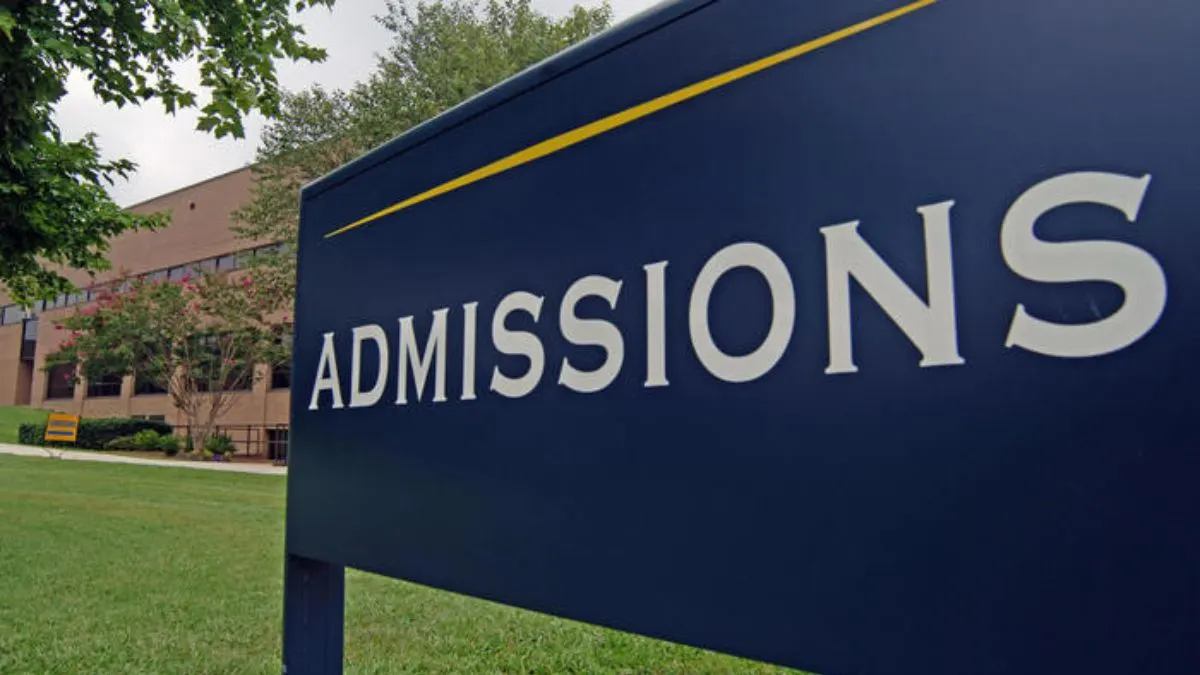A student education plan: what is it?
A student’s academic and personal development goals are outlined in a comprehensive plan known as a Student Education Plan (SEP). This plan acts as a roadmap to assist students in navigating their academic journey, ensuring they pursue their interests and professional goals and meet the graduation criteria.
The Value of a Student Education Plan
Having a carefully considered education plan is essential for kids. It supports individuals in making wise decisions about their future, staying committed to their objectives, and efficiently managing their time. In addition to assisting with academic performance, a SEP fosters personal development and professional preparedness.
Advantages of a Student Education Plan: Academic Achievement
The precise structure of a SEP allows students to focus on their studies and fulfill their academic obligations. Students who create and follow realistic goals are more likely to succeed in their studies and earn excellent grades.
Individual Growth
A student education plan promotes personal development in addition to academics. It encourages students to investigate their passions, participate in extracurricular activities, and acquire critical life skills. With this all-encompassing approach, kids are guaranteed to develop into well-rounded individuals ready to face the difficulties of life beyond school.
Getting Ready for Your Career
Career planning is a crucial component of a well-written SEP. It enables students to investigate several career pathways and obtain appropriate experience through internships or part-time work. Students can greatly benefit from this early career exploration in terms of making well-informed decisions about their future careers.
How to Draft a Plan for Student Education
Determining the Aims and Objectives
Determining the student’s goals and objectives is the first stage in developing an SEP. These must include professional and personal objectives in addition to academic ones, like hitting a particular GPA. Setting SMART (specific, measurable, attainable, relevant, and time-bound) goals is crucial.
Evaluating Present Academic Status
Students should evaluate their academic level before setting goals. This includes examining their marks, strengths, and room for development. Being aware of one’s academic level will make setting reasonable and doable goals easier.
Creating Both Short- and Long-Term Objectives
In their SEP, students should include both short- and long-term goals. Long-term objectives include graduating with honors or getting accepted into a prestigious university, but short-term objectives include finishing a particular class or getting better in a specific area.
Academic Requirements: Elements of a Successful Student Education Plan
A successfully completed SEP outlines the academic prerequisites for graduation. This covers the particular classes that must be taken, the minimum grades needed, and any mandatory testing.
Activities Outside of the Classroom
Activities outside of the classroom are crucial to a comprehensive education strategy. Through these activities, students can explore their interests, learn new skills, and strengthen their college applications.
Individual Development and Progress
A successful SEP should include plans for personal growth and development in addition to academics and extracurricular activities. This could entail establishing objectives to enhance time management, cultivate leadership abilities, or boost self-assurance.
Planning and Career Exploration
A student’s education plan must include career preparation. This part should involve determining profession-related goals, acquiring relevant experience, and investigating various career alternatives.
How to Put a Student Education Plan into Practice: Steps for Regular Review and Adjustment
A SEP should be routinely examined and updated because it is not a static document. Students’ plans should adapt to reflect any changes in their interests and aspirations as they continue their studies.
Working together with mentors and advisors
Students ought to collaborate with mentors, instructors, and academic advisers to create and implement their SEPs. These people can offer insightful direction and encouragement, assisting students in staying on course and accomplishing their objectives.
Maintaining Drive and Concentration
The secret to successfully adopting a SEP is staying motivated and focused. Students ought to celebrate their successes, review their goals again, and constantly remind themselves of the significance of their education plan.
Creating a Student Education Plan: Difficulties
How to Beat Procrastination
One of the most typical problems in school planning is procrastination. Students can overcome this by dividing their objectives into more achievable assignments and assigning due dates to each.
Handling the Pressure of Academics
There can be excessive pressure to perform academically, particularly if students are trying to achieve their SEP’s high standards. It’s critical that students learn how to manage their stress successfully, get help when they need it, and strike a healthy work-life balance.
Managing Your Personal and Academic Lives
Managing your personal life and academic obligations can be difficult. A well-designed SEP should incorporate social and recreational time to help students maintain a balanced and healthy lifestyle.
Resources and Tools for Formulating a Student Education Program
Software and Apps for Education
Numerous apps and software resources allow students to construct and manage their SEP. These programs offer features like goal tracking, time management, and academic preparation.
Counseling Services for Academics
Academic counseling services are priceless tools for students. Counselors can assist students with creating their SEP, offer advice on choosing courses, and be there for them at every step of their academic careers.
Internet-Based Tools and Resources
There are a ton of materials available on the internet for lesson planning. Online tutorials, templates, and guidance are available to assist students in creating a thorough and successful SEP.
Teachers’ and Parents’ Roles in Student Education Planning
Parental Advice and Assistance
Parents are essential to supporting their child’s educational plan. They can help their children stick to their goals by giving advice, connecting them with resources, and encouraging them.
Teachers’ Part in Academic Scheduling
Teachers are crucial in assisting students in creating and implementing their SEPs. They can help students choose courses, support them academically, and keep them focused on their objectives.
Creating a Helpful Environment
Parents and educators may collaborate to establish a nurturing atmosphere that fosters student success. This requires candid communication, encouraging feedback, and supplying the required tools and resources.
The Value of Adaptability in a Student Education Plan: Changing Interests and Objectives
Students’ interests and aspirations can shift as they mature and change. With SEP’s flexibility, students should be able to modify their plans as necessary.
Adapting the Plan in Light of Academic Achievement
If a student’s academic performance changes, their SEP may need to be updated. This can entail choosing different courses, establishing new objectives, or seeking more help.
Case Studies: Effective Student Education Programs: Actual Students Who Gained
Numerous students have utilized SEPs to effectively further their academic and professional objectives. These case studies show how successful an education strategy with careful design can be.
Things They Taught Us from Their Experiences
By analyzing the experiences of accomplished students, others might gain insightful knowledge regarding the significance of preparation, persistence, and adaptability in accomplishing their objectives.
Typical Errors to Prevent When Drafting a Plan for Student Education
Having Impractical Objectives
Setting impossible goals is one of the most frequent blunders in education planning. To maintain motivation and focus, students should create realistic goals that are within their grasp.
Disregarding Individual Interests
While creating their SEP, students should recognize their interests, even though academics are vital. Following interests and passions might result in a more rewarding and comprehensive educational experience.
Disregarding the Value of Work-Life Harmony
Securing a long-term successful work-life balance is essential. Students should make sure that downtime, socialization, and self-care are all included in their SEP.
Prospective Developments in Student Education Scheduling The Effect of Technology on Educational Plans
Education planning is becoming increasingly dependent on technology. With the abundance of digital planning tools and online courses available, students may construct and manage their SEP with greater ease than before.
The Development of Tailored Educational Routes
With personalized learning paths, students may now better customize their education to fit their unique interests and needs. This trend of more schools providing their pupils with individualized education plans is likely to continue.
FAQs
When is the best moment to begin implementing a student education plan?
The best course of action is to start a student education plan as early as possible—ideally in middle or high school. This enables students to decide on their educational and career pathways with clarity and to set clear goals.
How often is it appropriate to evaluate a student’s education plan?
A student education plan must be reviewed at least once a semester. Frequent reviews guarantee that the plan is still applicable and fits the student’s changing interests and ambitions.
Can a student education plan be modified in the future?
A student education plan should adapt over time. Students’ SEPs should be revised to reflect changes in their goals and interests as they mature.
What function do extracurricular activities serve in a curriculum?
Activities outside of the classroom are essential to a student’s educational plan. They offer chances for personal development, support the development of critical life skills, and assist in creating a compelling college application.
What is the best way for parents to assist their child’s education plan?
Parents may support their child’s education plan by providing tools, promoting goal-setting, offering advice, and keeping lines of communication open about their child’s academic and personal growth.
In conclusion
To sum up, a student education plan is a crucial instrument for both academic and personal achievement. Students may accomplish their goals and prepare for a bright future by defining specific objectives, creating an organized strategy, and maintaining motivation. It’s never too early to begin planning, and every kid can produce a great SEP that puts them on the road to success with the correct assistance and materials.




One Comment on “Student Education Plan”